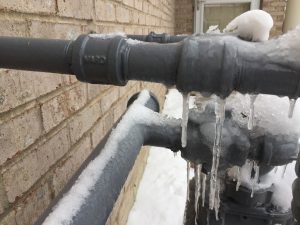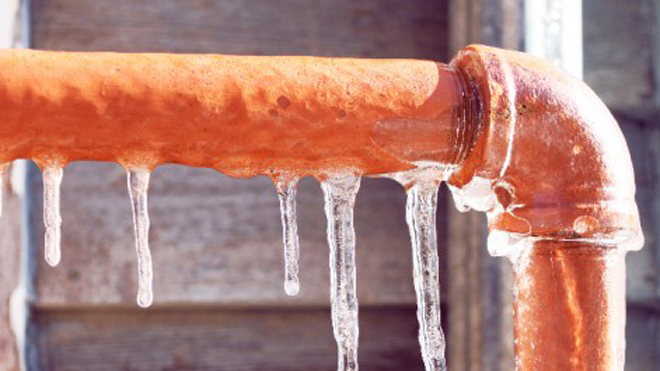Preventing Frozen Plumbing: Top Methods for Cold Weather
Preventing Frozen Plumbing: Top Methods for Cold Weather
Blog Article
We have discovered this article relating to How To Avoid Freezing Pipes directly below on the net and felt it made perfect sense to write about it with you here.

Cold weather can damage your plumbing, specifically by freezing pipelines. Here's exactly how to prevent it from taking place and what to do if it does.
Intro
As temperature levels drop, the threat of icy pipelines rises, possibly bring about expensive repair services and water damage. Understanding just how to prevent icy pipelines is important for property owners in cool environments.
Prevention Tips
Shielding susceptible pipelines
Wrap pipelines in insulation sleeves or use warm tape to protect them from freezing temperature levels. Focus on pipes in unheated or external areas of the home.
Home heating strategies
Keep indoor rooms properly heated up, specifically areas with plumbing. Open up closet doors to allow warm air to distribute around pipelines under sinks.
Just how to determine icy pipelines
Look for decreased water flow from taps, uncommon smells or sounds from pipelines, and noticeable frost on subjected pipelines.
Long-Term Solutions
Structural adjustments
Consider rerouting pipes away from outside wall surfaces or unheated locations. Add extra insulation to attics, cellars, and crawl spaces.
Updating insulation
Purchase top notch insulation for pipes, attics, and wall surfaces. Proper insulation helps preserve regular temperatures and reduces the threat of icy pipelines.
Shielding Outdoor Pipes
Garden hose pipes and outside faucets
Disconnect and drain pipes garden tubes before winter season. Mount frost-proof spigots or cover outside faucets with protected caps.
Understanding Icy Pipelines
What triggers pipelines to freeze?
Pipes ice up when exposed to temperature levels listed below 32 ° F (0 ° C) for extended periods. As water inside the pipelines ices up, it expands, taxing the pipeline walls and potentially triggering them to rupture.
Threats and problems
Icy pipelines can lead to water system disturbances, building damages, and pricey repairs. Ruptured pipelines can flooding homes and create considerable architectural damages.
Indications of Frozen Pipeline
Identifying icy pipes early can prevent them from breaking.
What to Do If Your Pipelines Freeze
Immediate actions to take
If you suspect icy pipelines, keep taps available to ease stress as the ice melts. Make use of a hairdryer or towels soaked in hot water to thaw pipelines slowly.
Verdict
Avoiding icy pipelines needs proactive procedures and fast responses. By comprehending the causes, indicators, and safety nets, homeowners can secure their pipes during winter.
5 Ways to Prevent Frozen Pipes
Drain Outdoor Faucets and Disconnect Hoses
First, close the shut-off valve that controls the flow of water in the pipe to your outdoor faucet. Then, head outside to disconnect and drain your hose and open the outdoor faucet to allow the water to completely drain out of the line. Turn off the faucet when done. Finally, head back to the shut-off valve and drain the remaining water inside the pipe into a bucket or container. Additionally, if you have a home irrigation system, you should consider hiring an expert to clear the system of water each year.
Insulate Pipes
One of the best and most cost-effective methods for preventing frozen water pipes is to wrap your pipes with insulation. This is especially important for areas in your home that aren’t exposed to heat, such as an attic. We suggest using foam sleeves, which can typically be found at your local hardware store.
Keep Heat Running at 65
Your pipes are located inside your walls, and the temperature there is much colder than the rest of the house. To prevent your pipes from freezing, The Insurance Information Institute suggests that you keep your home heated to at least 65 degrees, even when traveling. You may want to invest in smart devices that can keep an eye on the temperature in your home while you’re away.
Leave Water Dripping
Moving water — even a small trickle — can prevent ice from forming inside your pipes. When freezing temps are imminent, start a drip of water from all faucets that serve exposed pipes. Leaving a few faucets running will also help relieve pressure inside the pipes and help prevent a rupture if the water inside freezes.
Open Cupboard Doors
Warm your kitchen and bathroom pipes by opening cupboards and vanities. You should also leave your interior doors ajar to help warm air circulate evenly throughout your home.

We had been brought to that article about Prevent Frozen Pipes through a good friend on another website. Sharing is good. Helping people is fun. Kudos for your time. Please visit our website back soon.
Book Report this page